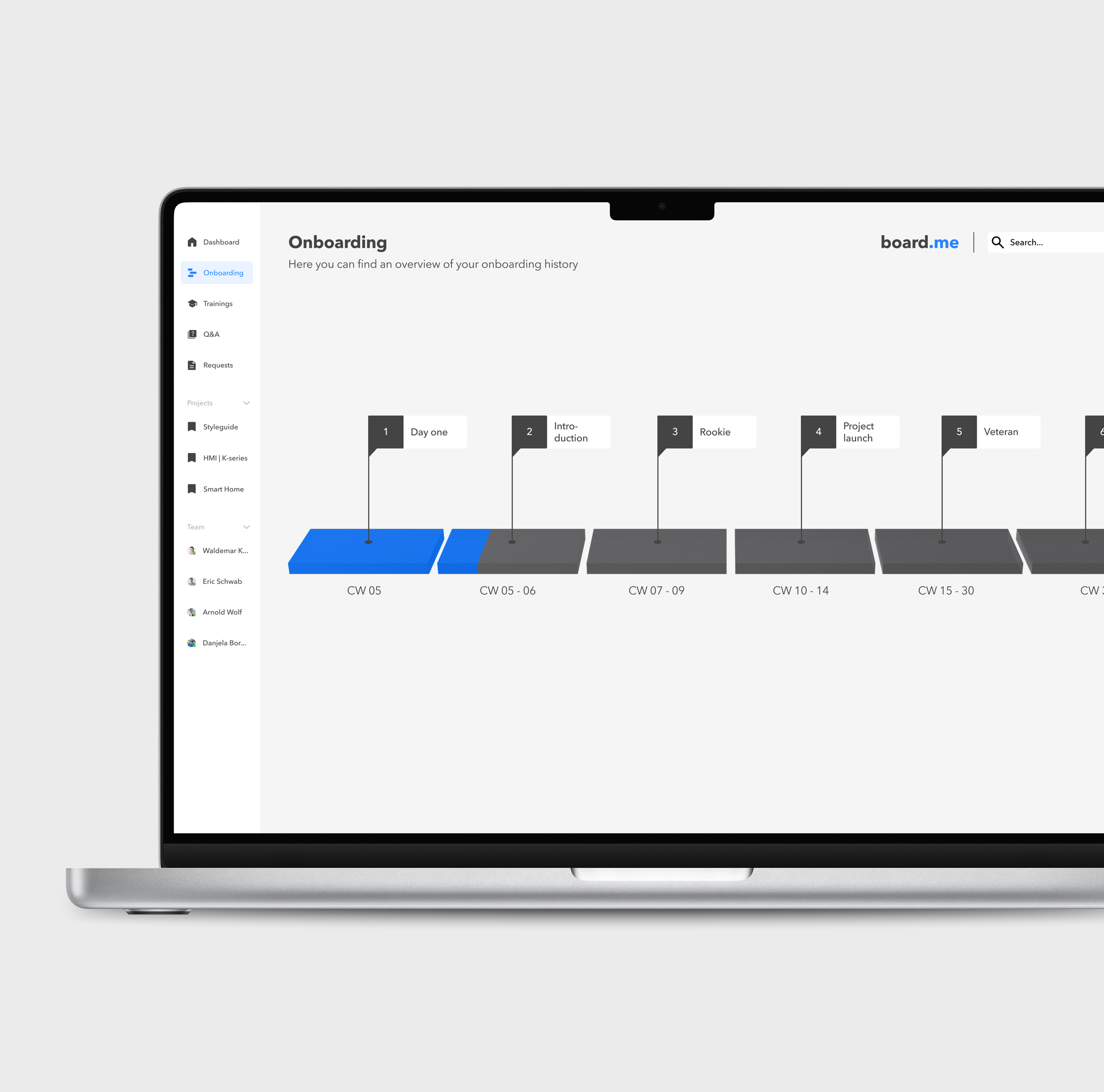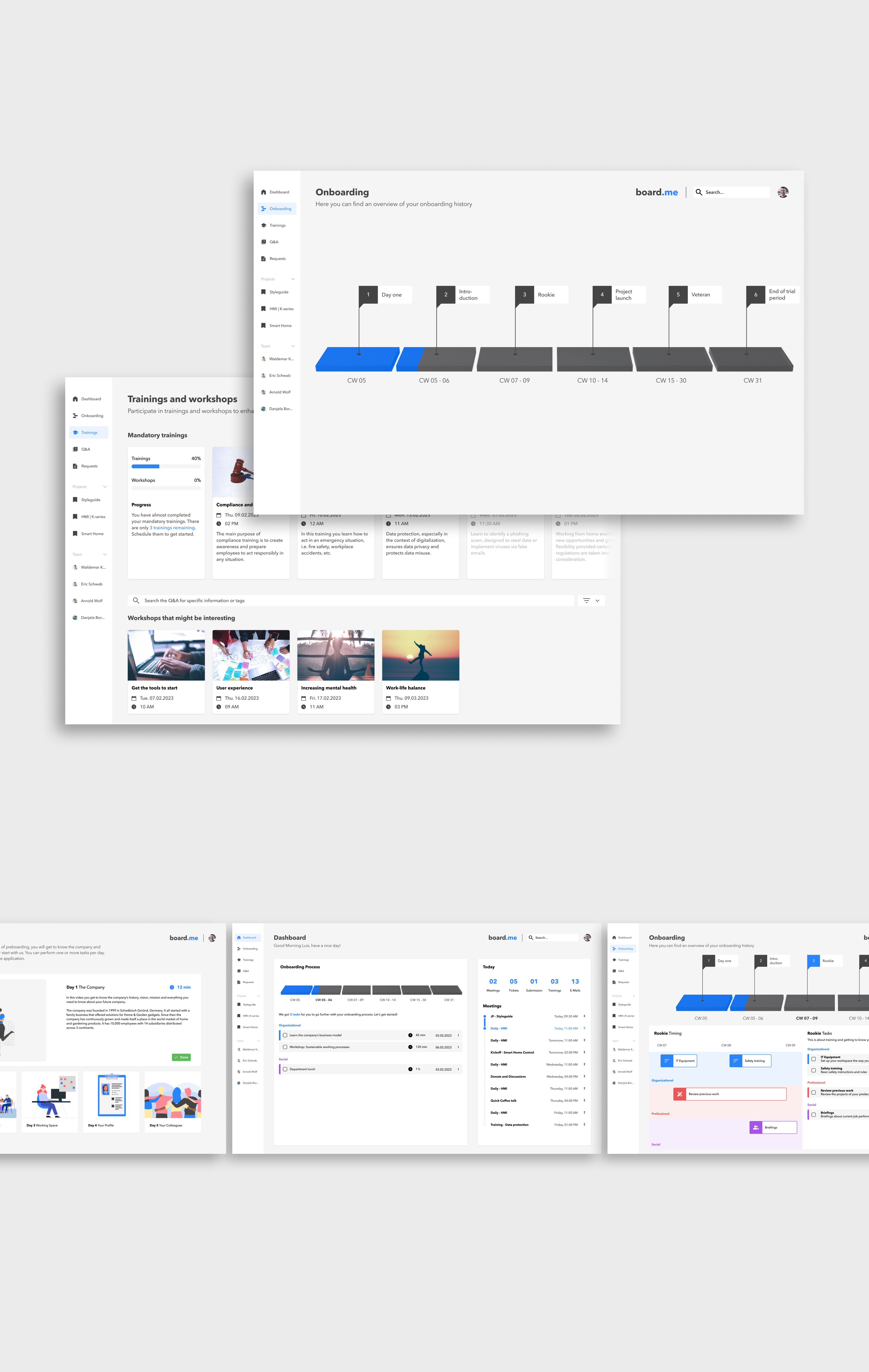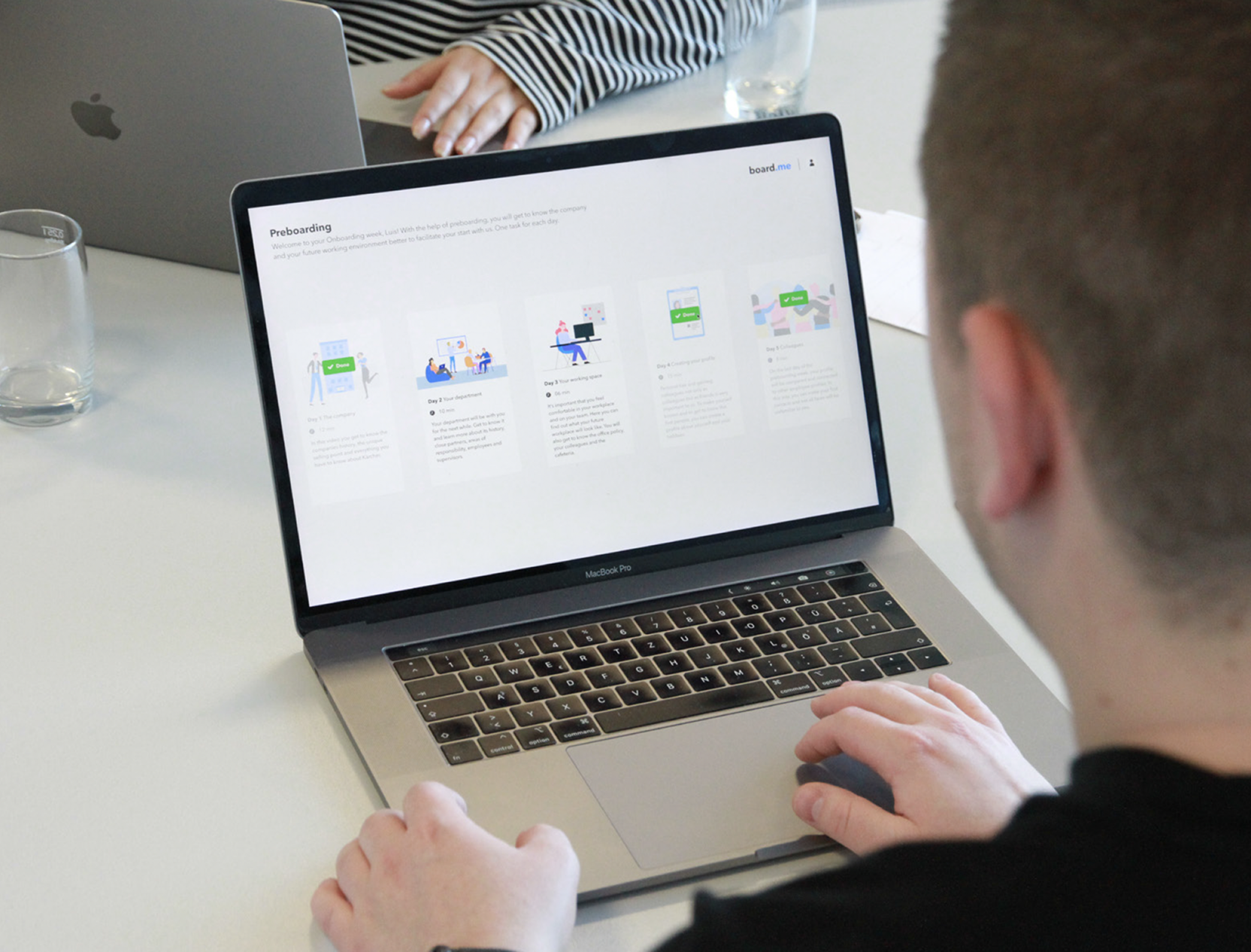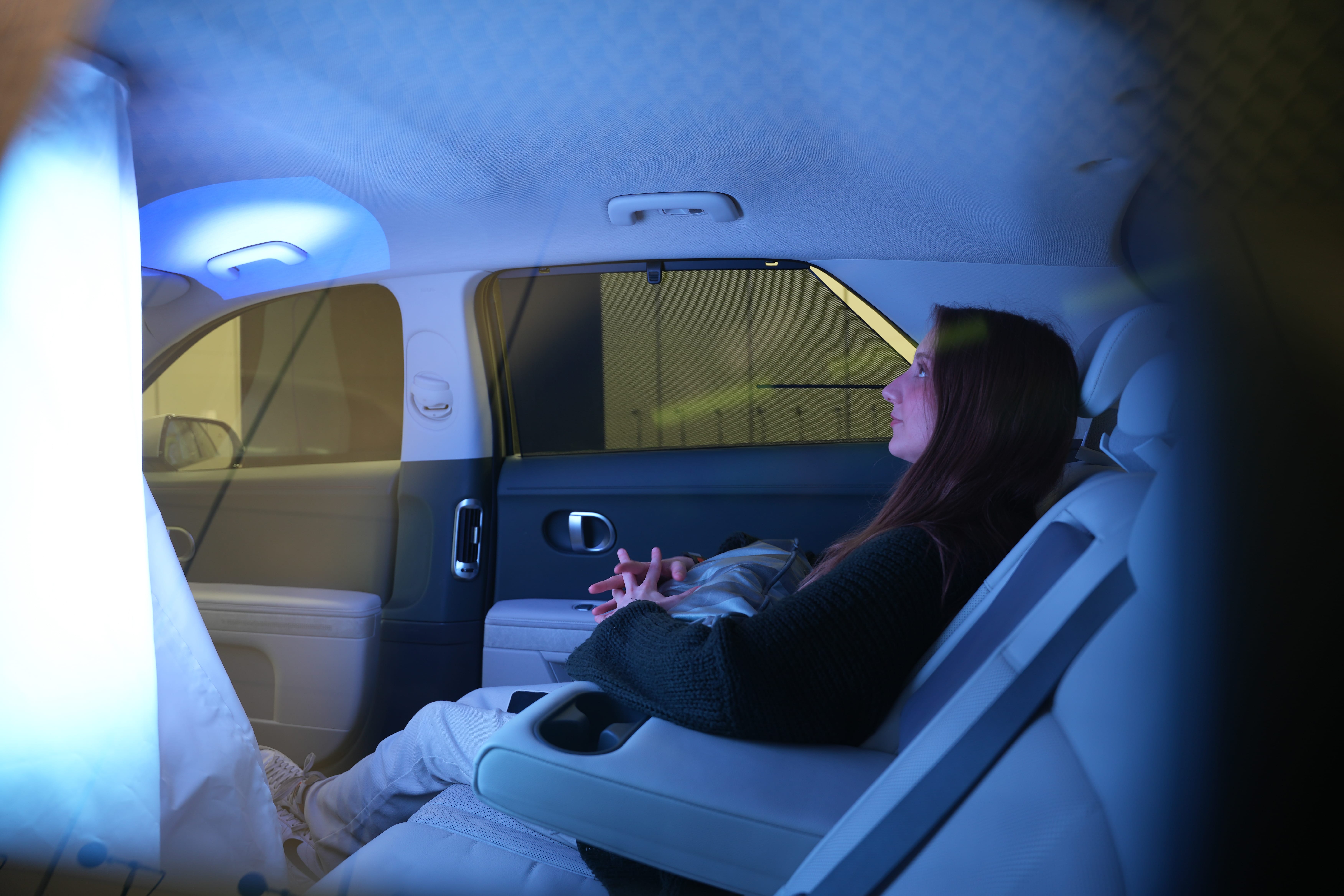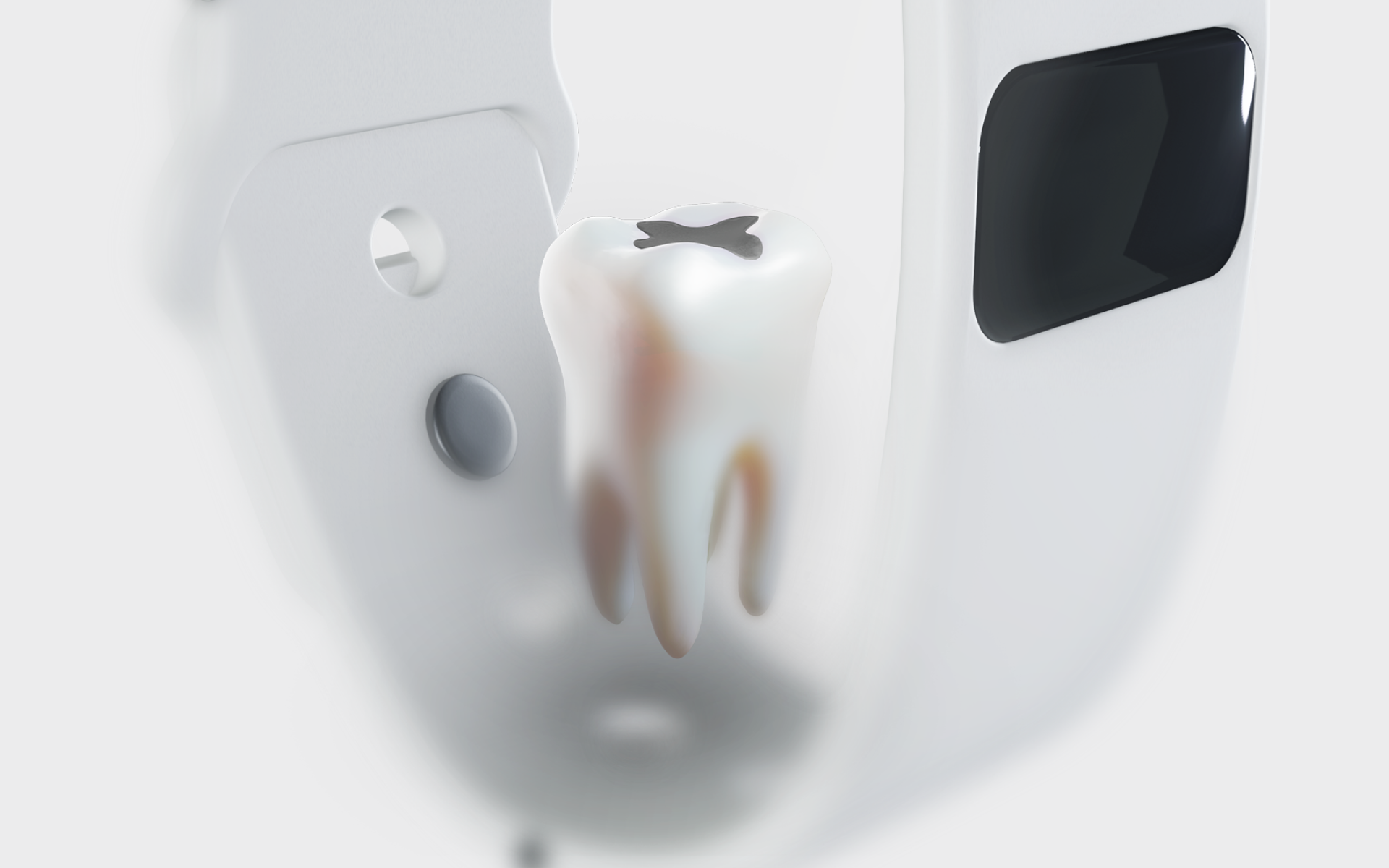board.me
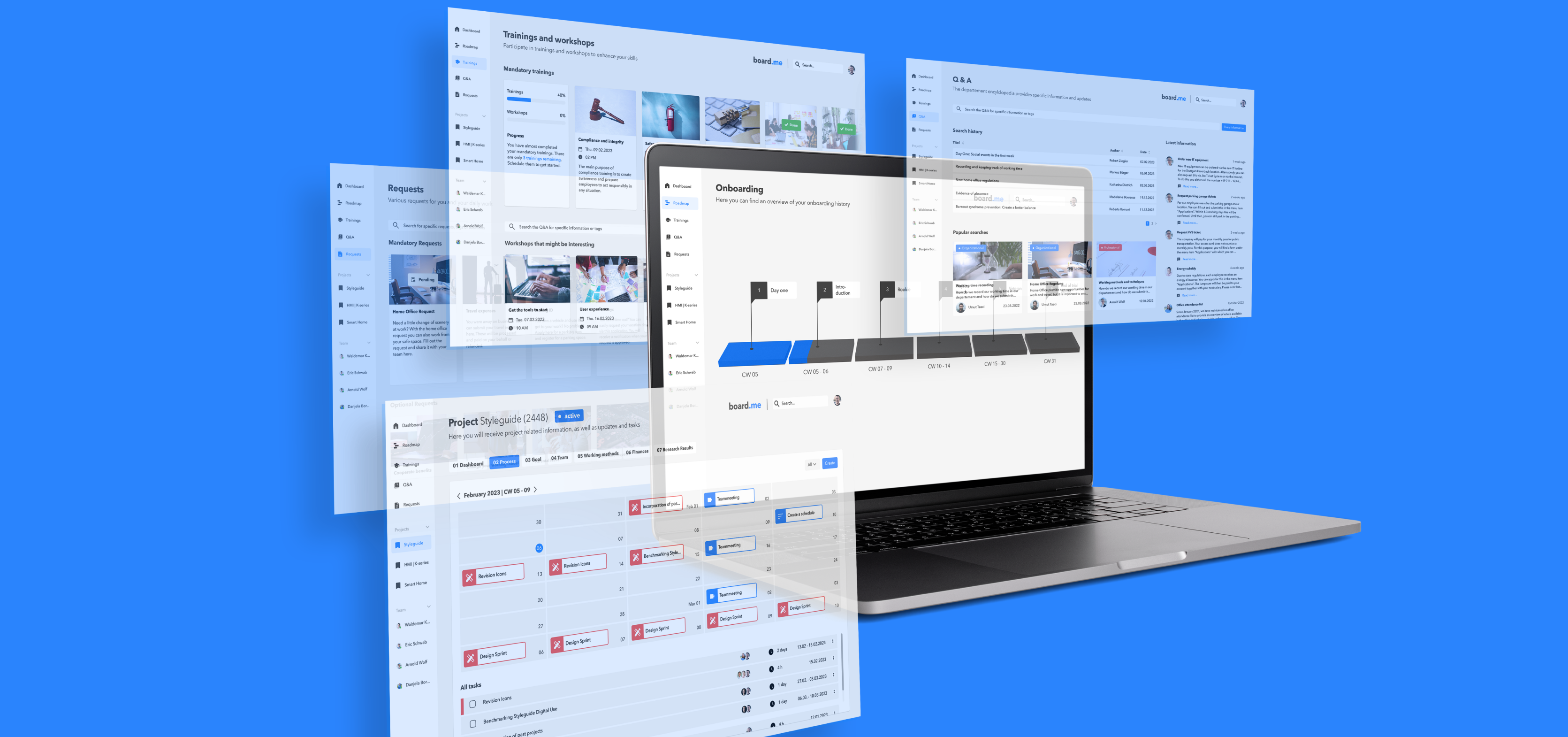
board.me – AI-Powered Onboarding Support for Career Starters During my Bachelor thesis I developed board me – a personal onboarding assistant that lives inside a company’s intranet and guides new hires step-by-step through people, processes and culture. Interactive dashboards, a 3D roadmap and just-in-time tasks turn the first six months into a clear, motivating journey. Early evaluations show faster time-to-productivity and higher retention, and the concept already earned a silver goHfG award for its impact on employee experience.
STRATEGY
Our vision is straightforward: from the very first day, every new hire should feel confident, connected and able to work at full speed. Traditional enterprise onboarding is fragmented and stressful. Board.me rebuilds the process around the three proven pillars of onboarding: social, professional and organisational integration. In one seamless intranet plug-in it delivers role-specific guidance, automates repetitive admin, and visualises every milestone on an intuitive dashboard. By measuring higher task-completion rates, stronger engagement scores and fewer support tickets, we let HR focus on people, not paperwork, while new employees hit the ground running.
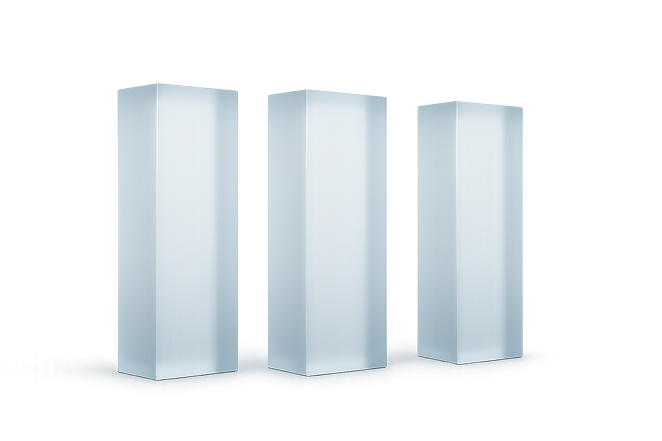
RESEARCH INSIGHTS
Interviews with junior hires, buddies, mentors and HR leads in five large firms revealed three universal pain points: no clear roadmap, scattered information and weak social anchoring. Further synthesis showed that a lack of transparency around upcoming tasks and feedback talks fuels stress, while information overload during week 1 makes people forget essentials. We therefore defined four must-haves: a visual timeline of the probation period, bite-sized self-service content, instant peer access, and early wins that keep motivation high—pillars that later shaped board me’s feature set.

APPROACH
I steered the project with the Double-Diamond and the 4 Cs onboarding framework, starting with an Opportunity Canvas to align user pains with business goals. “How-Might-We” reframing fed a Crazy-8 workshop that generated various ideas, rapidly filtered through a Kano-style feature matrix to hit MVP scope. Low- and high-fidelity prototypes in Figma moved through two moderated usability sprints; insights from task-completion recordings closed navigation gaps and cut average onboarding tasks

DESIGN
board me ships with a lean 8-pt-grid design system that blends into any corporate brand: neutral greys let content breathe, while a punchy “boarding-blue” drives every call-to-action. Avenir Next, modular icons and responsive cards keep screens clean from laptop to mobile, even at scale. Core views—a personalised home, request hub, faceted Q&A and a colour-coded 3-D roadmap—turn abstract HR steps into a visible, motivating journey. All components hit WCAG 2.1 AA and dark-mode parity, giving dev teams faster hand-off and newcomers one accessible source of truth.
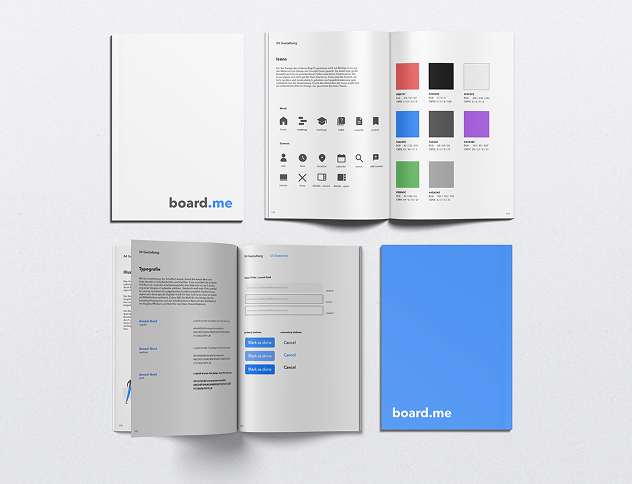
LEARNINGS
This thesis sharpened the three strengths I now bring to every team: distilling complex information into crisp, user-friendly flows, aligning diverse stakeholders around one clear vision, and tracking UX KPIs from first sketch to live release. Winning an industry award for board me reinforced my conviction that evidence-based, thoughtfully measured design can turn organisational complexity into tangible value—for users and for the business alike.

